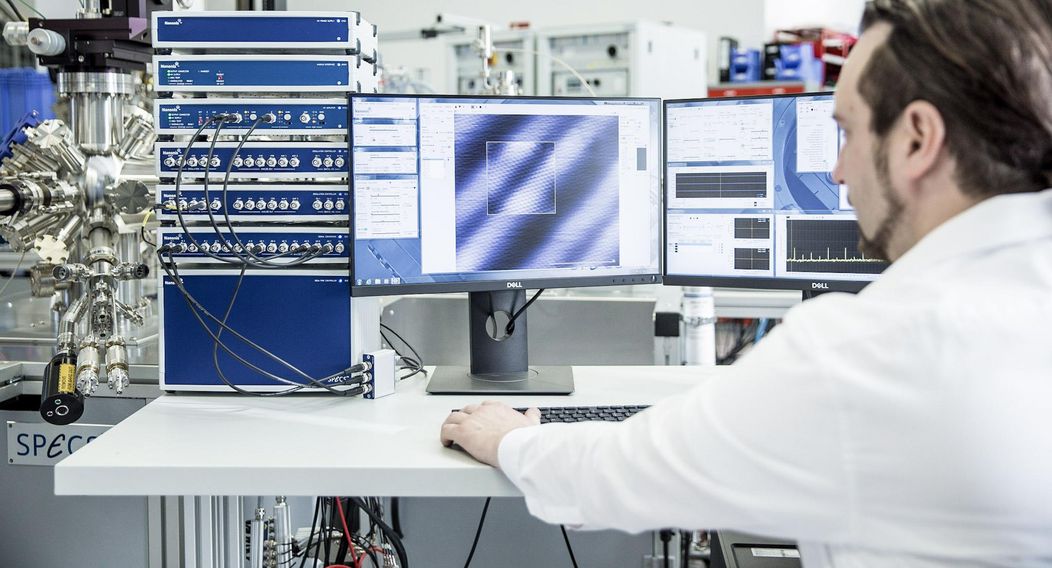 Detail
DetailTwo new functionalities added to the BP5e lock-in modules: Tandem demodulation and the possibility to control the lock-in amplitude with the generic PI module
The BP5e signal architecture has been designed with the goal of being even more flexible than that of its predecessor, the BP5. Software modules can now access signals which previously were not available, or only available to a limited number of modules.
The lock-in modules gain two additional capabilities:
- Tandem demodulation: The output signal of a lock-in module (demodulated signal) can be used as the input signal of a second lock-in module. Theoretically, up to 8 lock-ins could be connected in series, although that has no practical relevance. As all signals never leave the digital domain, the losses and added noise which are inevitable when using tandem demodulation with typical single-box lock-ins are not an issue with this implementation
- Amplitude control of the lock-in output: This feature makes it possible to use the lock-in excitation amplitude as the output signal of the Generic PI modules. The lock-in amplitude can thus be used as part of a feedback signal, for example to keep the AC-component of a potential across a sample at a predetermined level as other parameters have an indirect effect on the measurement taking place.
Your web browser is deprecated
This could effect the presentation and some functions of our website.
